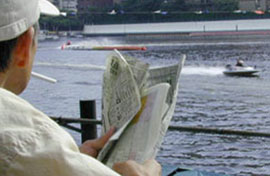
Airman endured abuses as war prisoner in Japan
the Star-Telegram
On March 27, 1945, 2nd Lt. Fiske Hanley of Fort Worth and his fellow B-29 crewmen found themselves in an unwanted spotlight over Japan.
After many Japanese cities were turned into crematoria by devastating night raids by B-29 bombers, the Japanese military set up powerful arc lights near anti-aircraft artillery, lights that shone as high as 20,000 feet, to illuminate the bombers.
Hanley was flight engineer on a B-29 named the Stork Club after the favorite nightspot of its previous captain, a native of Manhattan, N.Y. The name was painted on the bomber's nose, and Hanley's crew inherited the nickname The Stork Club Boys.
The Stork Club had been on several bombing raids, but this time its assignment was to drop mines in the Shimoseki Straits, a main route for Japanese supply ships carrying goods to the Japanese people.
To drop the mines accurately, the bomber had to fly at a low and dangerous altitude.
Hanley saw the Stork Club's lead B-29 become caught in a concentration of spotlights. The anti-aircraft guns concentrated their fire on that plane, blowing it out of the sky.
...snip...
The Americans were moved to Omori prison on Tokyo Bay, where, on their first day, they were told that they could bathe in the ocean. It was the most pleasurable experience they had had since being captured.
Although one Japanese officer had decreed that the Americans would be machine-gunned, his guards refused to carry out the order. Shortly afterward, Hanley heard excited shouting. Through a barred window, he saw five Higgins boats, full of U.S. Marines, landing on the beach.
I had no idea that there was a military prison in Omori. I wonder what's there now.
Here's something... http://www.warsailors.com/POWs/powcamps.html
OMORI was located half way between Tokyo and Yokohama. The full name of this camp was Tokyo POW Camp Omori-ku Iriarai Kila. It was set up on an artificial island in Tokyo bay, connected to the Tokyo-Yokohama road by a 200 meter long wooden bridge, sourrounded by the sea on all sides. The oval shaped island was about 75 meters long and 65 meters wide. Around the island was a tall bamboo fence with barbed wire attached to it. The prisoners' barracks were in the middle of the island, between the administration buildings and the soldiers' quarters (north) and the anti aircraft guns (south). Again, see my page "Life in Imprisonment" which provides some details on daily life at this camp as well as Camp Ofuna.


